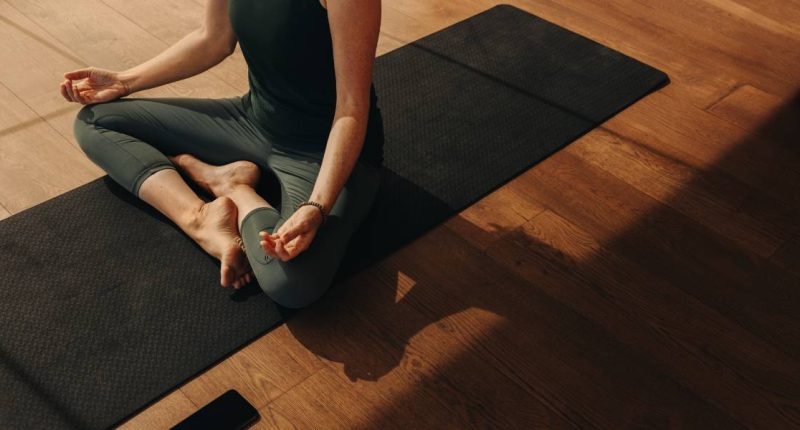Low impact yoga helped women taking part in a study reduce episodes of urinary incontinence by around 65%, research has shown.
Regular stretching and strengthening is also beneficial for older women struggling with the condition, the team behind the findings say.
The study, led by experts from Stanford Medicine and the University of California, San Francisco, is part of the drive to find low-risk, low-cost ways of tackling urinary incontinence – a common issue which faces women as they age.
The study’s senior author, Leslee Subak, chair of obstetrics and gynaecology at Stanford Medicine, said: “Our study was testing the kind of yoga that just about anyone can do, with modifications for different physical abilities.
“What I love about it is that it’s safe, inexpensive, doesn’t require a doctor and accessible wherever you live.”
- Altered states of consciousness from meditation and yoga prevalent among adults
- Walking and doing yoga can help treat depression
- Mediterranean diet reduces mortality risk among women
More than half of middle-aged women are affected by urinary incontinence, with around 80% of 80-year-olds suffering from the condition. It can cause other problems, including social isolation and falls associated with getting to the toilet at nighttime.
The 12-week study found that the benefit of low-impact yoga and stretching/strengthening are on a level with medication used to tackle incontinence.
The study involved one group of 121 participants who took part in yoga, and another group of 119 volunteers who took part in physical conditioning. The mean age of the women was 62.
In the yoga classes, women were taught 16 poses to help strengthen their pelvic floor during two 90-minute sessions a week. They were also instructed to practice the poses for at least an hour outside of the classes.
Those in the physical conditioning group undertook stretching and strengthening exercises for the same amount of time as the yoga class.
At the start of the study, the women had on average, 3.4 urinary incontinence episodes per day, but by the end of the programme, those in the yoga group were experiencing, on average, 2.3 fewer episodes of incontinence per day.
Participants in the physical conditioning group were experiencing 1.9 fewer episodes per day.
- Higher blood sugar levels in women with gestational diabetes linked to higher risk of complications for mother and baby
- Ozempic butt: Women claim Ozempic caused their bum to ‘completely disappear’
- Healthcare for women in the UK is worse than in Vietnam, Latvia and Kazakhstan
The 65% reduction in episodes can be compared to reductions of around 30% to 70% seen with other nonsurgical treatments for incontinence.
Subak said: “I’m impressed that exercise did so well and impressed that yoga did so well. One of the take-home messages from this study is ‘Be active!’
She went on: “Part of the problem is that incontinence is stigmatised; we don’t talk about it. Or we hear folklore about this being normal when you get older. In fact, it’s very common but it’s not inevitable, and we have very effective ways of treating it.
“It takes away independence. My patients will say, ‘I can’t stay with my kids or grandkids because I’m afraid I’ll wet the bed, and I can’t talk about it; it’s too embarrassing.’
“Incontinence and overactive bladder are among the biggest risk factors for falls and fractures among older women. You’re rushing to the bathroom at night – with the lights off – tripping and falling, and breaking a hip.”
Read more in Annals of Internal Medicine.




